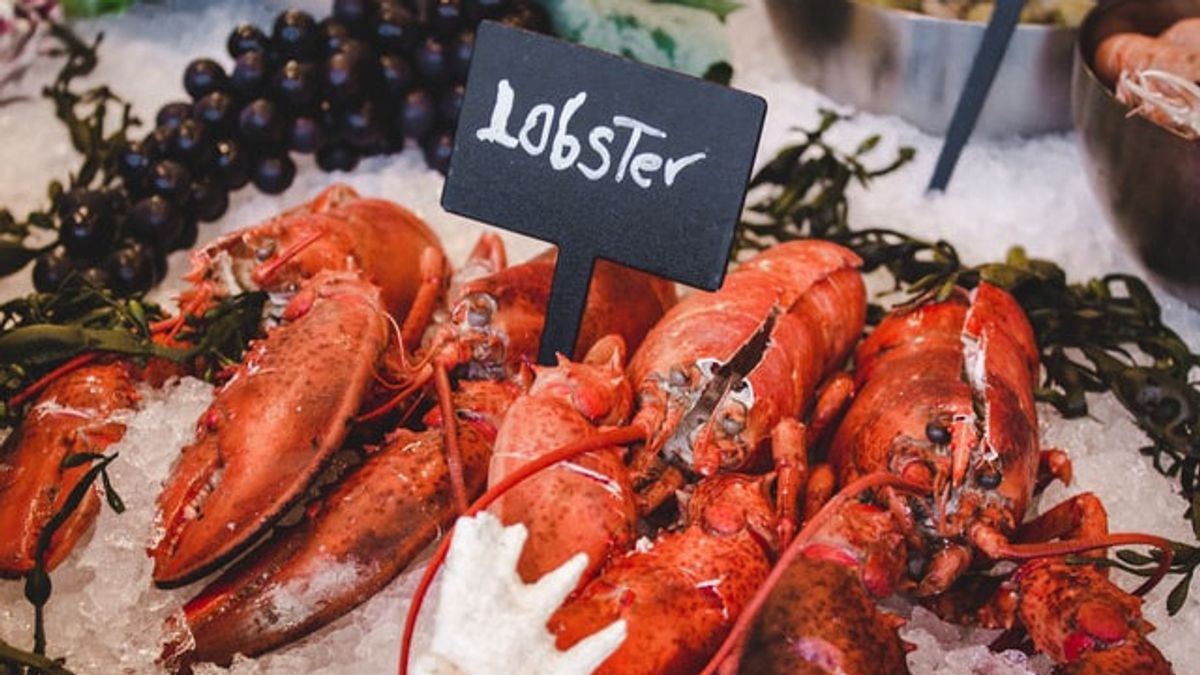JAKARTA - Nowadays, lobster is a luxury dish. However, if you look at its history, lobster was once considered the food of the poor and was the dish of prisoners. Then how then can lobster be upgraded to luxury food?
In 1622, William Bradford, a governor of the Plymouth Plantation, United States (US) felt ashamed of his friend, the new colonial nation, because he could only serve lobster. As quoted by foodtimeline.org, at that time Bradford could not even serve it with bread or other side dishes other than a cup of water.
At that time lobster was considered a marine animal which was rather disgusting because it resembled an insect. No wonder, because the name itself is taken from the English language loppe, which means spider. "Lobster around the house is seen as a sign of poverty and degradation," wrote John J. Rowan in The Emigrant Sportsman in Canada (1876).
Even at one time lobster packed into canned food was once selling for 11 cents a pound, considerably less than 53 cents for Boston roasted peanuts. And the lobsters are bought not for personal consumption, but for cat food. So how then can lobsters go up in class?
Promoted to next gradeAt first, lobsters were so abundant that they became cheap. The cheap impression is getting more and more lingering when lobster becomes the food of prisoners.
It wasn't until around the 19th century that lobster began to be used as a dish on trains, in the United States, something interesting happened. To quote Pacific Standard, the food service provider on the train serves lobster as if it were rare and exotic food. However, the lobster dish at that time had not yet shown its true form as it is now.
Passengers who do not know that it is actually cheap food so love it. Demand began to surge outside the train. It was at this time that lobsters started to become popular.
In the 1880s, chefs found a way to make lobster even better. The trick, they immediately cooked the lobster that was still alive. It was also during this time that restaurants began selling lobster dishes served with bread and butter or cottage cheese shows.
And then something interesting happened. The Americans were getting hooked on lobsters. The demand for lobster was booming. Since then, the number of lobsters has decreased and automatically the commodity prices have soared.
Changes in the perception of food like that have a theory. One person who made research related to changing perceptions of food is France Bellisle.
In his research for The European Food Information Council, Bellisle explained the effect of popularity can change a person's perception of food. According to him, a person's eating behavior can influence the eating behavior of others, either directly when buying food, or indirectly by seeing the behavior of those around him. The influence also occurs both consciously and subconsciously.
Therefore, popularity is one of the main factors in changing people's perceptions of food, including lobster. We can change to enjoy the food we eat, when we see the people around us seem to enjoy it too.
One example is the Marlboro cigarette product. This product used to be bought more by women when the name was Mild as May. When it was rebranded, becoming Marlboro, many men ended up buying the product. The same principle applies to lobster dishes, a food that was once considered cheap, has now been upgraded to a luxury dish.
The English, Chinese, Japanese, Arabic, and French versions are automatically generated by the AI. So there may still be inaccuracies in translating, please always see Indonesian as our main language. (system supported by DigitalSiber.id)













